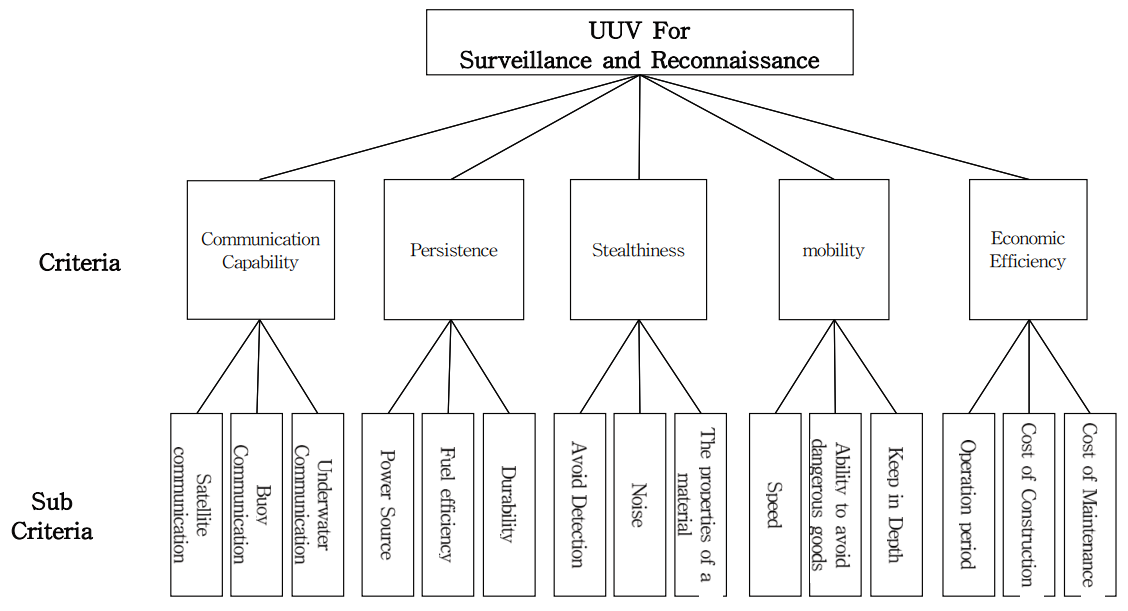Prioritizing the capabilities of unmanned underwater vehicles necessary for ISR based on the Analytic Hierarchy Process
DOI:
https://doi.org/10.37944/jams.v4i1.98Keywords:
analytic hierarchy process (AHP), unmanned underwater vehicle, intelligence, surveillance and reconnaissance (ISR), required capabilityAbstract
The need for unmanned underwater vehicles (UUVs) has received significant attention given the current security situation in the Korean Peninsula. UUVs are used in the military to perform five key missions: intelligence, surveillance, and reconnaissance (ISR), mine countermeasures, anti-submarine warfare, inspection/identification, and oceanography. In this study, we analyze the standards of evaluation of the characteristics and capabilities of UUVs that are necessary for ISR missions, which are most important from among the above mentioned ones. First, we establish 5 main criteria and 15 sub-criteria by consulting a group of experts. Next, we use the analytic hierarchy process (AHP) for these criteria. It computes the relative weights of the criteria based on pairwise comparisons, in order to evaluate the relative importance and priorities of the criteria we established, by selecting another group of 51 experts for the evaluation of the pairwise comparisons among the criteria. Consequentially, the importance associated with performance and ability of the ISR tends to be relatively high while the one associated with cost and economy for operating the UUVs appears to be low. These results may be useful in analyzing required capabilities in a more objective and concrete manner while procuring UUVs in the future.
Metrics

Downloads
Published
How to Cite
Issue
Section
License
Copyright (c) 2021 Journal of Advances in Military Studies

This work is licensed under a Creative Commons Attribution 4.0 International License.

This work is licensed under a Creative Commons Attribution 4.0 International License.

이 저작물은 크리에이티브 커먼즈 저작자표시 4.0 국제 라이선스에 따라 이용할 수 있습니다.






